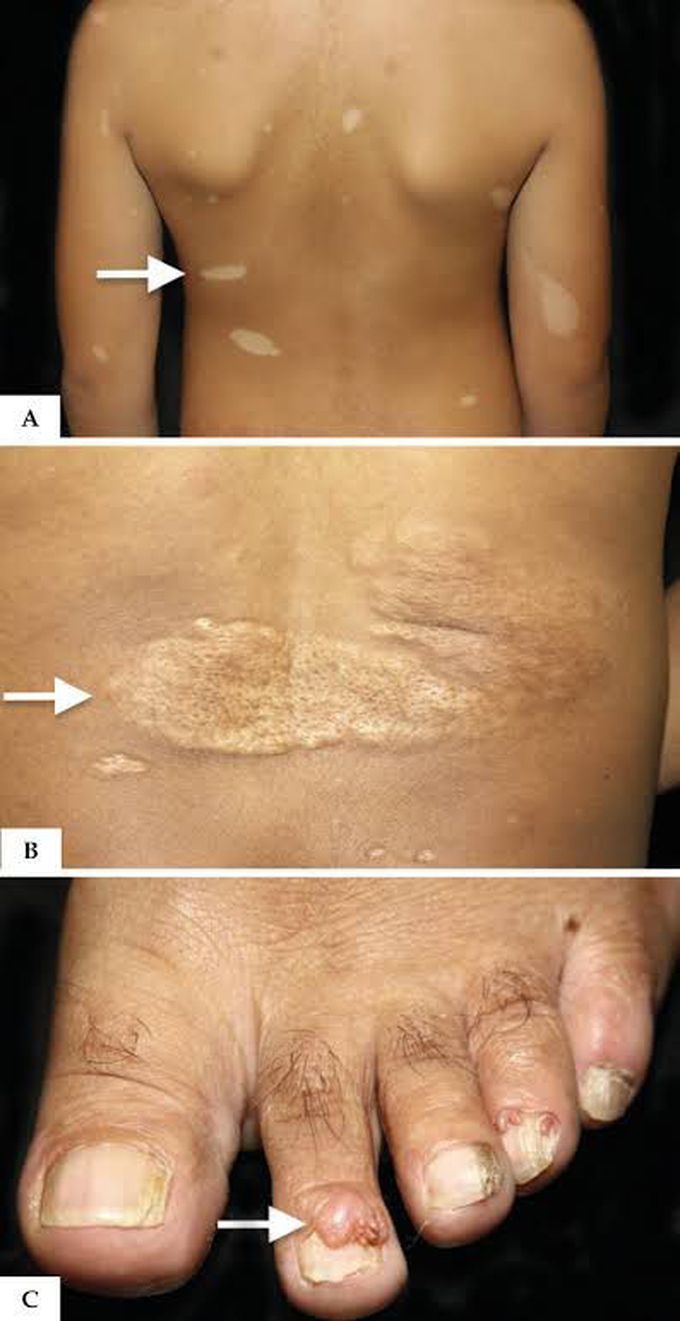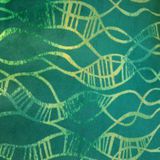


Tuberous sclerosis
Tuberous sclerosis complex is a multisystemic, autosomal dominant genetic disorder with complete penetrance, that can evolve with hamartomas in multiple organs, such as skin, central nervous system, kidney and lung. TSC occurs due to the deletion, rearrangement and inactivating mutation of tumor suppressor genes TSC1 or TSC2, that lead to abnormal proteins hamartin and tuberin. Skin lesions are detected in all ages and affect more than 90% of TSC patients. Among the cutaneous manifestations, hypopigmented macules are present in 90% of the cases and are usually found at birth. The most typical macules are hypopigmented and have a leaf shape, round in one end and pointed in the other, the so called “ash-leaf”. They are usually larger than 5mm. Connective tissue nevi are normal-colored or brown plaques that can be present at birth or appear during childhood and adolescence. Among these lesions, some are called shagreen patches when located on the lumbosacral region, with the orange peel appearance and histologic features similar to other collagenomas found on the trunk. Ungual fibroma or Koenen tumor are tumors observed later, usually after the second decade of life and can progressively increase in size. It has predilection for females and for the toes and generally can cause longitudinal ridging on the nails.



